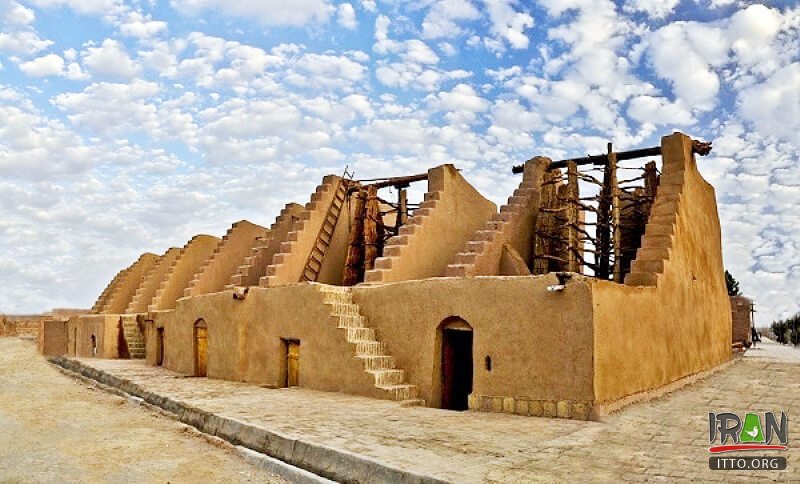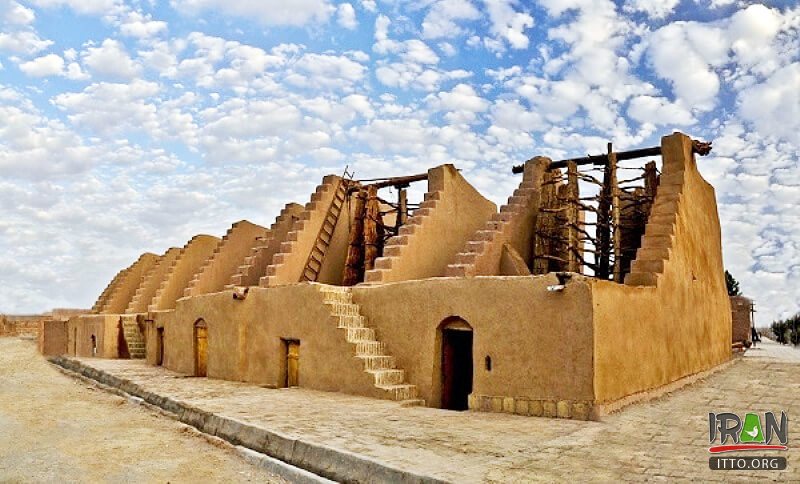Several centuries-old windmills, locally called Asbads, are being rehabilitated in the oasis city of Tabas-e Masina, eastern Iran.
“A restoration work has been commenced on mudbrick windmills that are still standing tall in both Kheyrabad neighborhood and in Salimi historical house, which are located in Tabas-e Masina, South Khorasan province.
The Ministry of Cultural Heritage, Tourism and Handicrafts has almost completed preparations for a chain of such vertical-axis windmills for possibly becoming a UNESCO World Heritage. Asbads can be found in the provinces of Sistan-Baluchestan, South Khorasan, and Khorasan Razavi.
Made of natural clay, straw, and wood, an Asbad is typically comprised of eight chambers, with each chamber housing six blades. As the area’s strong, steady wind enters the chambers it turns the blades, which then turn grindstones. The structures reach up to about 65 feet in height.
The Asbad used to be a smart technique to grind grains. It also bears testimony to the human being’s adaption with nature by transforming environmental obstacles into opportunities. “Asbad is a smart technique to grind grains, a technique which goes back to ancient times when the people living in the eastern parts of Iran, in an attempt to adapt themselves with nature and transform environmental obstacles into opportunities, managed to invent it,” according to UNESCO website.
“The earliest known references to windmills are to a Persian millwright in 644 CE and windmills in Seistan [Sistan], Iran, in 915 CE,” the Encyclopedia Britannica says.
Avid visitors and researchers can examine the subtle yet simple mechanism in person as several windmills have been restored and brought back to life to testify how ancient Iranians harnessed the wind to make a living.
The Islamic Republic designated the Asbad as a national heritage site in 2002.



